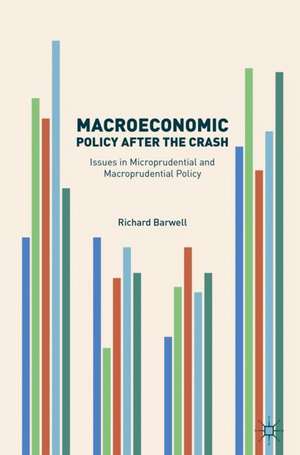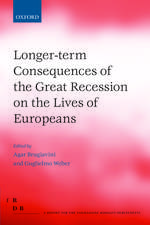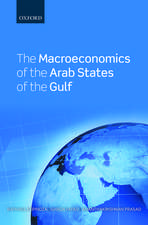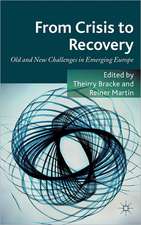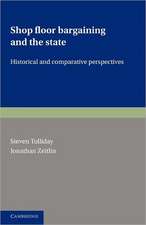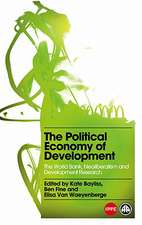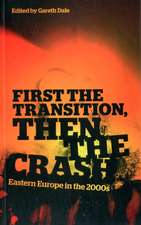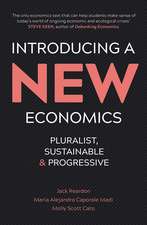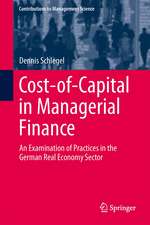Macroeconomic Policy after the Crash: Issues in Microprudential and Macroprudential Policy
Autor Richard Barwellen Limba Engleză Hardback – 3 mar 2017
Toate formatele și edițiile
| Toate formatele și edițiile | Preț | Express |
|---|---|---|
| Paperback (1) | 534.69 lei 6-8 săpt. | |
| Springer International Publishing – 3 mai 2018 | 534.69 lei 6-8 săpt. | |
| Hardback (2) | 515.46 lei 6-8 săpt. | |
| Palgrave Macmillan UK – 23 mar 2017 | 515.46 lei 6-8 săpt. | |
| Springer International Publishing – 3 mar 2017 | 653.98 lei 6-8 săpt. |
Preț: 653.98 lei
Preț vechi: 769.39 lei
-15% Nou
Puncte Express: 981
Preț estimativ în valută:
125.14€ • 130.65$ • 103.57£
125.14€ • 130.65$ • 103.57£
Carte tipărită la comandă
Livrare economică 04-18 aprilie
Preluare comenzi: 021 569.72.76
Specificații
ISBN-13: 9783319404622
ISBN-10: 3319404628
Pagini: 221
Ilustrații: XIV, 427 p.
Dimensiuni: 155 x 235 x 25 mm
Greutate: 0.79 kg
Ediția:1st ed. 2017
Editura: Springer International Publishing
Colecția Palgrave Macmillan
Locul publicării:Cham, Switzerland
ISBN-10: 3319404628
Pagini: 221
Ilustrații: XIV, 427 p.
Dimensiuni: 155 x 235 x 25 mm
Greutate: 0.79 kg
Ediția:1st ed. 2017
Editura: Springer International Publishing
Colecția Palgrave Macmillan
Locul publicării:Cham, Switzerland
Cuprins
Part 1) Microprudential Policy.- 1) The causes of the crash.- 2) The crisis response.- 3) Global reform.- 4) Local Reform.- 5) The wider prudential policy agenda.- Part 1) Macroprudential Policy.- 1) The macroprudential agenda.- 2)Turf wars: the relationship between macroprudential policy and other policy regimes.- 3) The conventional instruments of macroprudential policy.- 4) Unconventional macroprudential instruments.- 5) MP-UK: Macroprudential policy in action in the United Kingdom.- 6) Macroprudential policy and the UK housing market.
Notă biografică
Richard Barwell is an economist at BNP Paribas Investment Partners in London. Prior to that, he worked at the Royal Bank of Scotland (RBS), having earlier spent almost a decade at the Bank of England, working on issues of monetary and financial stability. He has a PhD from the London School of Economics, UK, and is the author of Macroprudential Policy: Taming the wild gyrations of credit flows, debt stocks and asset prices (Palgrave Macmillan, 2013).
Textul de pe ultima copertă
This book reviews the key policy debates during the post-crash era, describing the issues that policymakers grappled with, the decisions that they took and the details of the policy instruments that were created. It focuses specifically on the policy regimes at the epicentre of the crisis: micro- and macro-prudential policy with chapters exploring the revolution in the conduct of macroeconomic policy in the period since the financial crisis. The author shows that throughout this period policymakers have had to balance two conflicting objectives – to repair balance sheets in the banking and public sectors whilst simultaneously trying to catalyse an economic recovery – and that has required them to innovate new tools and even new policy regimes in response. This book goes behind the jargon and explains what exactly policymakers at the Bank of England, the Treasury and beyond did and why, from QE to austerity to Basel III.
Caracteristici
Focuses specifically on microprudential and macroprudential policy following the financial crisis Highlights interesting policy issues and innovations from parallel debates taking place in the Eurozone, the United States, Japan and the other advanced economies Introduces the new regime of macroprudential policy
